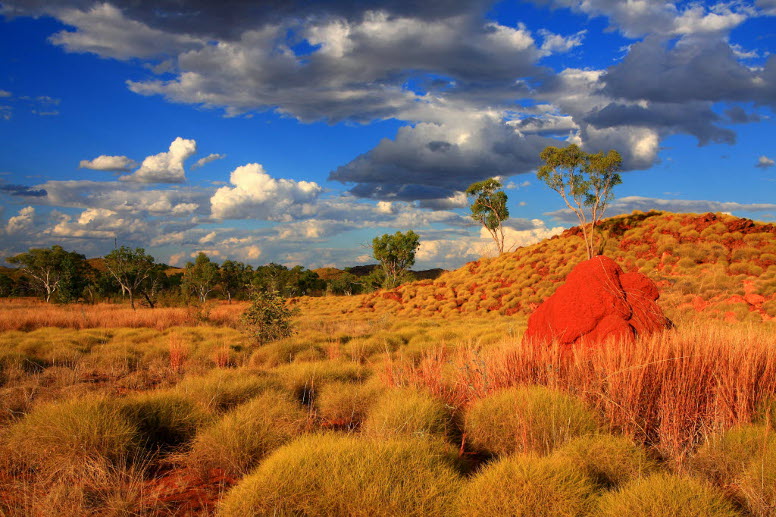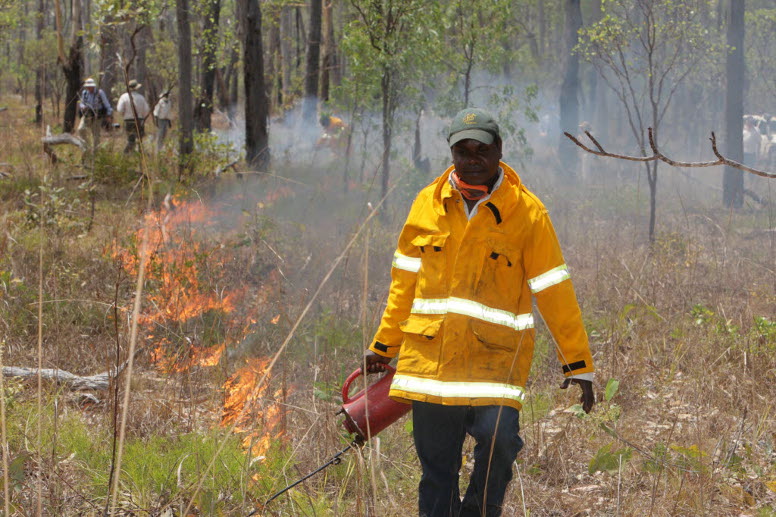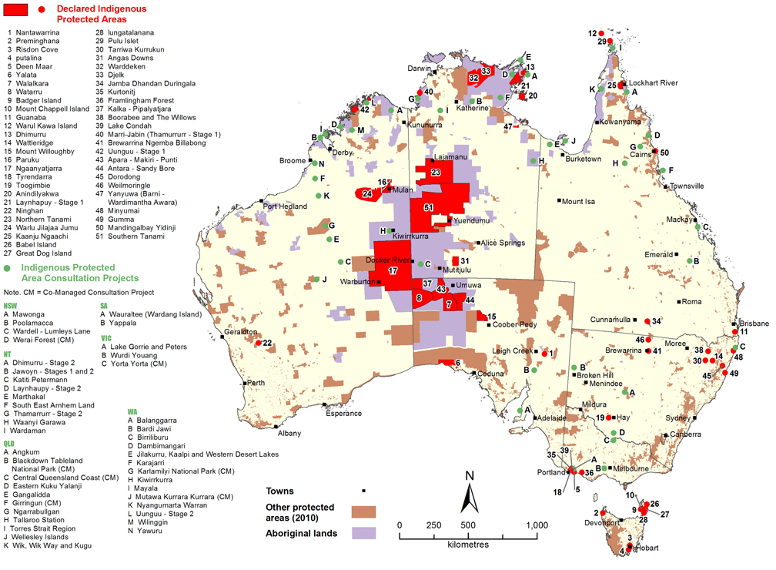Indigenous Conservation Programs
Getting to Know Australia's Indigenous Protected Areas and Indigenous Rangers
The Australian Outback is one of the most unusual places on Earth. Composed of forests, woodlands, and grasslands, this vast area remains wild, abundant, and largely untouched by development. But a number of threats confront the Outback. They range from massively destructive, uncontrolled wildfires and degradation from the large number of feral animals and exotic plant invasions to the severe impacts of climate change and the pressures of rapid, large-scale oil and gas exploration and development. Compared with more densely settled areas of Australia, relatively few people live in the Outback, and, despite these growing threats, much of it remains unmanaged.

The Kimberley. Photo courtesy of Annabelle Sandes.
This is why the Australian government, through the federal environment agency is working with Indigenous people across the Outback to support their efforts in revitalizing on-the-ground management. Two key programs are successfully working to manage the Outback—Indigenous Protected Areas and the Indigenous Ranger program.
Aboriginal people have created 60 Indigenous Protected Areas on their traditional lands, with more expected this year. Similar to national parks, these areas cover 50 million hectares (almost 124 million acres) of the continent. They help to protect unique landscapes, plants, and animals—and are managed by the Indigenous owners with a combination of ancient local cultural knowledge and contemporary scientific methods. In addition to conservation, these areas help to actively maintain traditional culture, support Indigenous owners living and working on their land, and promote skills development and local employment.
“These Indigenous Protected Areas are a win-win for Australia. They not only protect the special places in our Outback but also provide an avenue to support Indigenous peoples to actively express their culture and strong desire to be living on and managing their lands,” says Patrick O'Leary, an expert on conservation partnerships for The Pew Charitable Trusts.
Australia's Indigenous Ranger program was pioneered by Aboriginal people as a way to actively manage and protect their traditional land and seas. They are similar to conventional park rangers in some ways—managing areas to control threats such as wildfires, exotic weeds, and feral animals—but unique because they combine their local traditional knowledge and culture with Western science in a “two-toolbox” approach to protecting the environment. This program employs roughly 700 Indigenous Rangers across Australia.
“The Rangers program provides much needed job and training opportunities in remote and often disadvantaged regions,” says O'Leary. “By embracing Indigenous conservation lessons and techniques, and partnering with the best contemporary science, we can build a sustainable future that will benefit not only those living in the Outback but all Australians.”

Indigenous Ranger Marcus Cameron applies a controlled burn in Warddeken Indigenous Protected Area. Photo courtesy of Peter Eve.
These successful new models of conservation are delivering benefits for all Australians by reducing wildfires, erosion, and the threat of extinctions among native plants and animals while controlling feral animals and noxious weeds. They bring together the living knowledge of Indigenous conservation and the best possible land management science, in order to find ways for pastoral communities, Indigenous peoples, industry, conservationists, and government to work together to protect the heart of Australia.









